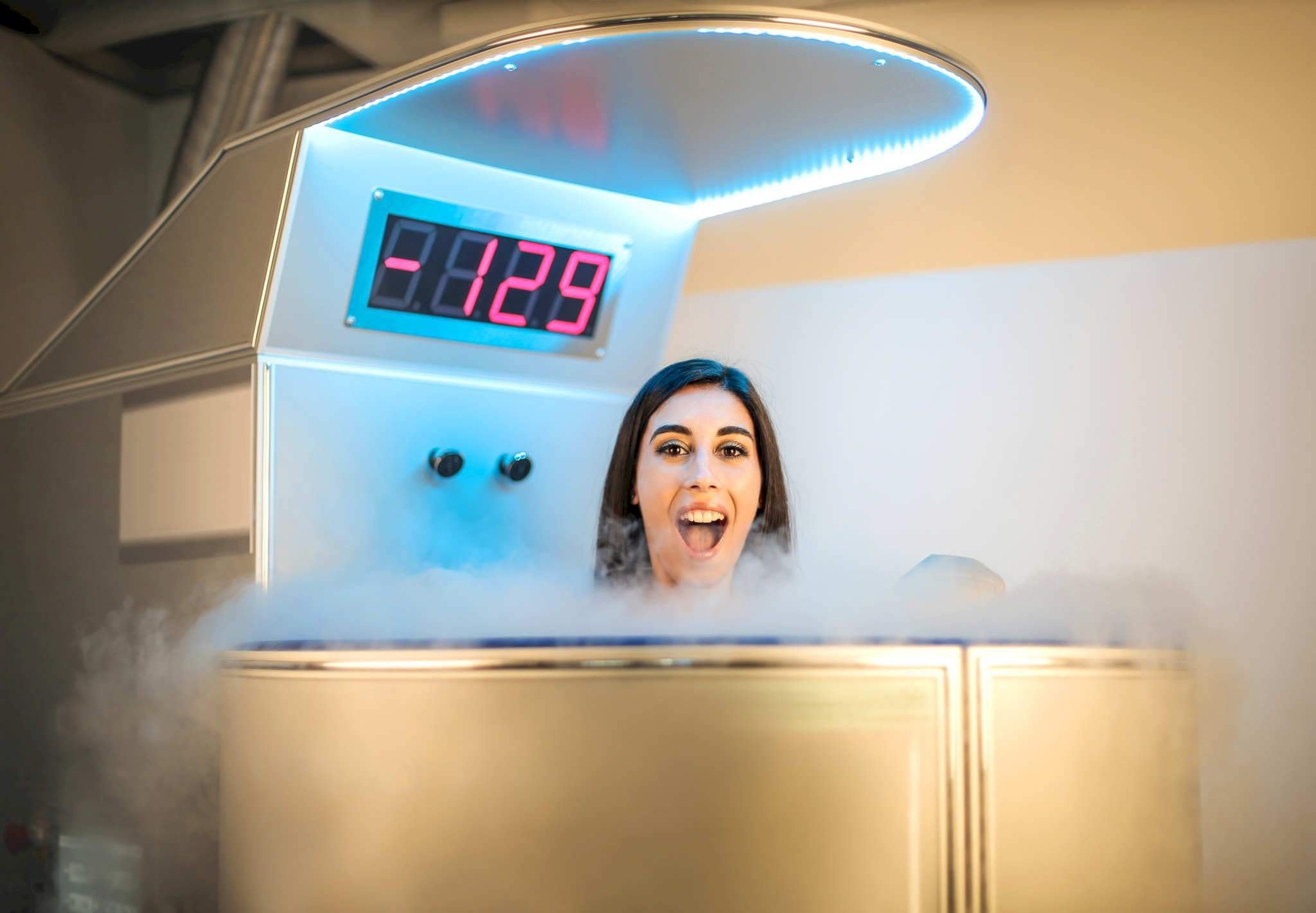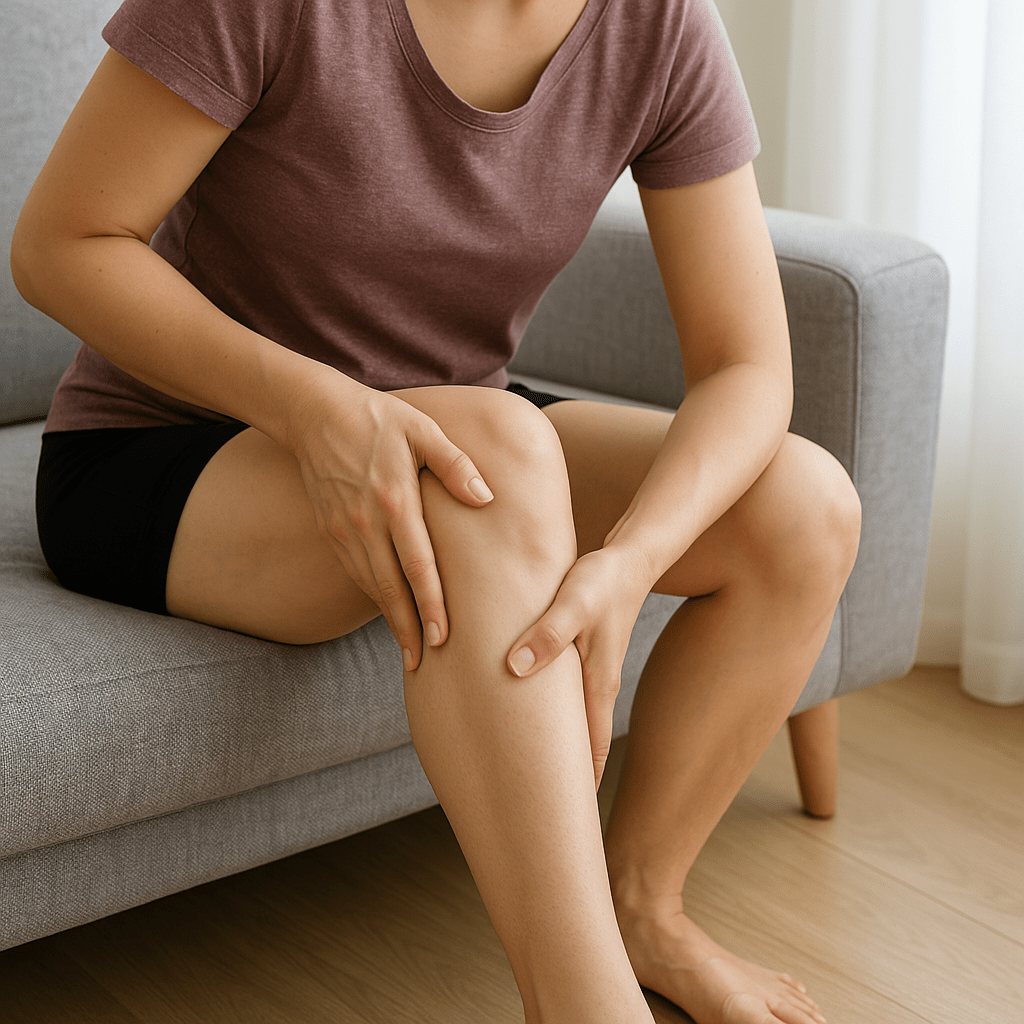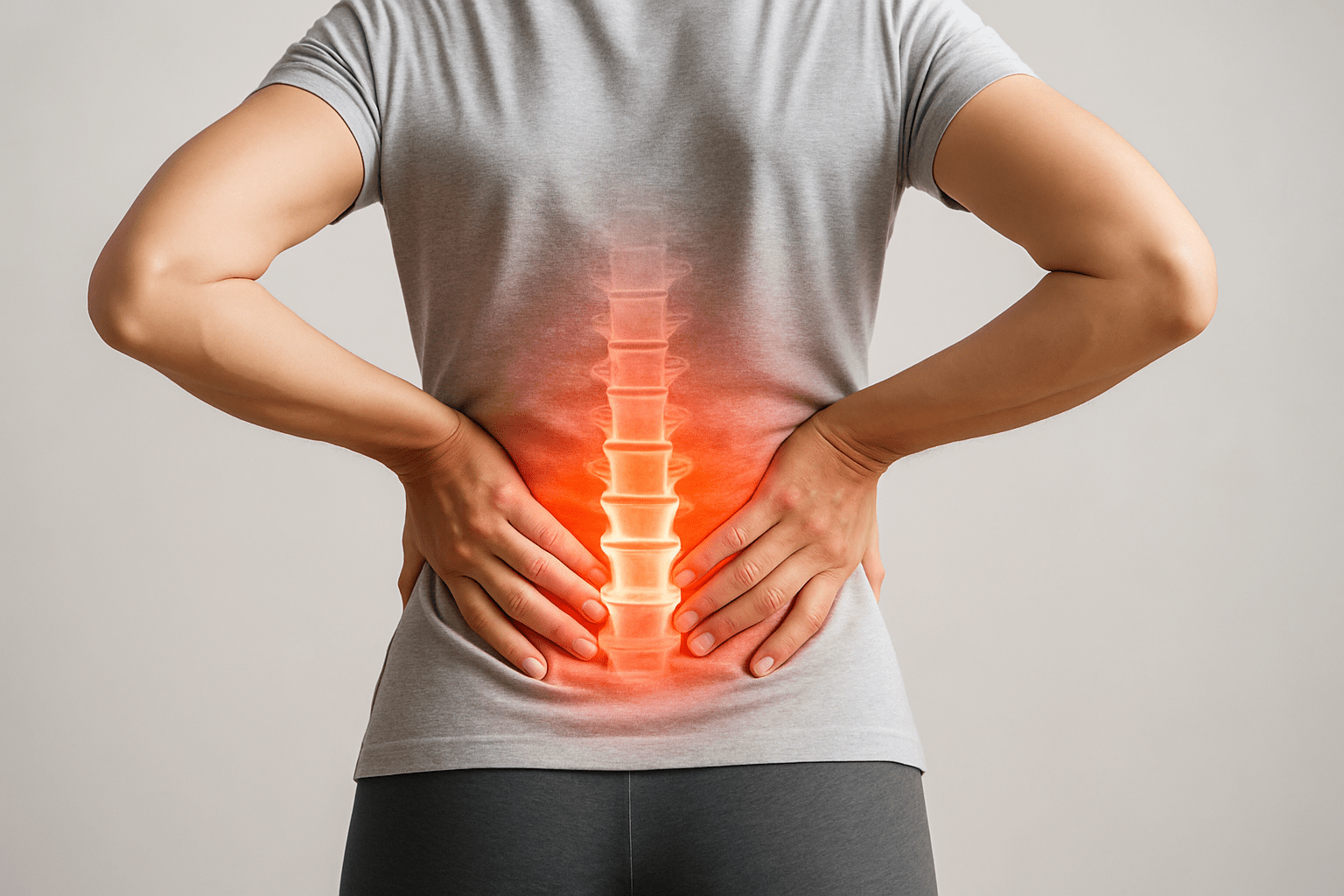Cryotherapy: Can cold help against back pain?
When it comes to back pain, the first thing that comes to mind is heat therapy with the help of an ointment or a heat patch. Treating pain with cold seems unusual at first glance. Yet this method has always been used by professional athletes, and successfully. Now we can all enjoy this therapy and keep up with the times. We would therefore like to introduce cryotherapy in a little more detail. What is cryotherapy? Instinctively and reflexively, we reach for a cool pack or a cooling sports gel when we suffer a sports injury, for example to the knee or ankle. This is supposed to relieve the pain and prevent swelling, a hematoma or a bump....


When it comes to back pain, the first thing that comes to mind is heat therapy with the help of an ointment or a heat patch. Treating pain with cold seems unusual at first glance. Yet this method has always been used by professional athletes, and successfully. Now we can all enjoy this therapy and keep up with the times. Therefore, we would like to introduce cryotherapy a little closer.
What is cryotherapy?
Instinctively and reflexively, we reach for a cool pack or a cooling sports gel when we suffer a sports injury, for example to the knee or ankle. This is intended to relieve the pain and prevent swelling, a hematoma or a bump. The maximum increase in therapy through cooling is provided by cryotherapy. Here, the entire body is exposed to polar cold averaging -110°c to -160°c for about 1-3 minutes. The air is icy but dry and thus unfolds its effect.
What are the effects of cold therapy on the body?
The sudden drop in body temperature, both external and core, triggers a kind of shock. The body tries to raise or maintain the temperature for the vital organs. There is a slowing of the pulse and a simultaneous rise in blood pressure. During the cooling down, some invigorating hormones such as endorphins and the "happiness hormone" serotonin are released. You can certainly imagine how good it feels.
What are the arguments in favor of cryotherapy?
Physicians and sports medicine specialists have long recognized the benefits of cryotherapy:
- Maximize and accelerate the recovery effect as an athlete
- Improvement of healing after (sports) injuries
- Pain relief (in muscles and joints)
- Releasing muscle tension
- Anti-inflammatory effect
- Stimulating effect on the circulation and blood circulation
- Increase the quality of sleep
- Refreshment, vitalization and strengthening of the skin
Can cryotherapy be used to relieve back pain?
As mentioned earlier, cold relieves pain after an injury or bruise. For toothache, a cold wrap can be more than beneficial. It is the same with cryotherapy. The pain is "frozen" or numbed. By slowing down the blood circulation, any bacteria that may have entered the body have no chance to spread further in the body. The cold therefore prevents inflammation and can thus accelerate healing. In addition to back pain, cold therapy also proves effective for headaches, inflammation or overstretching of tendons and joints, and chronic osteoarthritis. Sports doctors have treated their charges with cold, for prophylaxis and relief or cure. How fortunate that we too can now benefit from the effects. Although there are no well-founded, scientific studies to date that prove the range of benefits of cryotherapy, it is still readily used as a supplement or support to conventional medical treatment.
What is the procedure of cryotherapy treatment?
A treatment with cold lasts between 1 and 3 minutes. To prevent undesirable side effects such as burns or frostbite, this maximum time should be strictly observed. You enter a cold cabin in your underwear or bathing suit, including gloves and socks, with only your head peeking out. Inside the cabin there are temperatures between -110°c and -160°c, which envelop the body. The whole-body cooling is mainly used to reduce inflammation, for pain after surgery, injuries to the musculoskeletal system (joints, ligaments, tendons, muscles) and spinal complaints, as well as for tension or rheumatism.
Does cryotherapy have any disadvantages?
A real disadvantage is not necessarily the most common "side effect" of the treatment. Despite the fact that you spend only a short time in the cold, the treatment is quite exhausting for the body. Therefore, many people feel very tired afterwards. Allow yourself some time off, this increases the effect of the therapy and also just feels good that way. Listen to your body and allow yourself to rest. Sports or increased exercise should be avoided immediately after the session.
Cryotherapy meets massage chair - and what we get out of it
An excellent opportunity to relax after the session in the cold cabin, thus prolonging the effects of cryotherapy, is a massage chair. It has several, selectable massage options. Depending on personal preference and localization of discomfort, you can choose a soothing program. An alternating pressure massage, as in the Shiatsu method, provides loosening where the cold could not fully eliminate the tension. More and more therapy centers are offering this successful combination to their clients. Go along with this trend, your body will thank you.
Where are the origins of cryotherapy?
Like so many alternative treatments, cold therapy originated in Japan. Already in ancient times, the Japanese used cold to treat various ailments. But it was not until the 1970s that this form of treatment developed into the one we know today. In Europe, France was one of the pioneers and allowed professional athletes in particular to benefit from the positive effects. Incidentally, we owe a lot to the Japanese in this field. Worth mentioning in this context is the massage chair, for which we are more than grateful!
How do I properly prepare for cryotherapy?
Cryotherapy is unfortunately not suitable for everyone. In a prior consultation with the therapists, you can determine whether you can participate in a session or what to consider. Pregnant or breastfeeding women, people with chronic diseases, pacemaker wearers, asthma sufferers or people who have to take medication regularly should initially refrain from treatment. In general, it makes sense to have a medical check-up beforehand. This can be carried out either at the therapy center or by a doctor. The initial consultation also includes detailed advice and information, information about all effects and side effects, and obtaining consent. Under no circumstances should these preparatory steps be dispensed with; after all, it is your health that is at stake! A prescription from your doctor is not required, but a suitability test is more than recommended.
Just before the meeting, the following things are recommended:
- Do not do sports immediately before treatment
- Do not take a warm bath or shower, this would be a tremendous strain on the circulation
- Do not shave or depilate freshly
- Cover small wounds or fresh scars with a plaster
- Body jewelry that is not removable should also be protected with plasters
- Restore moisture to the skin with the help of lotions and oral hydration
Can cryotherapy cause pain?
When cryotherapy is performed professionally, there is no risk of pain or burns. The therapist should have undergone a recognized training and be ready to help and advise you. Especially during the first session, he should not leave you alone, because there may be unpleasant moments. The narrow cabin, the cold, if you are not used to this, you can quickly become nervous. It is very reassuring to know that you have a competent contact person nearby. Essential for the success of a therapy, of whatever kind, is confidence in its effect as well as the person carrying it out. That's why it's best to get some basic information about the therapy center and their seriousness in advance, which can ideally be proven with certificates.
What is the cost of a session in the cold?
The price level for cryotherapy varies greatly and depends on the region, the center and the scope of treatment offered. Therefore, it is not possible to name an exact sum as a lump sum. On average, however, the costs range between €30 and €50 per session. In some cases, health insurance companies are accommodating and make a contribution to the costs. This is to be inquired individually with the insurance. The trend and the associated advantages of the combination of conventional and alternative medicine has penetrated to some payers and the willingness to support the insured in health promotion is gradually becoming established.

Co-founder and Managing Director of Massage Chair World. With his expert knowledge and industry expertise, he helps private individuals and companies to find the right massage chairs for relaxation, health and vitality. The individual expert advice is provided both by telephone or video chat, as well as in the exhibition outside Stuttgart.




